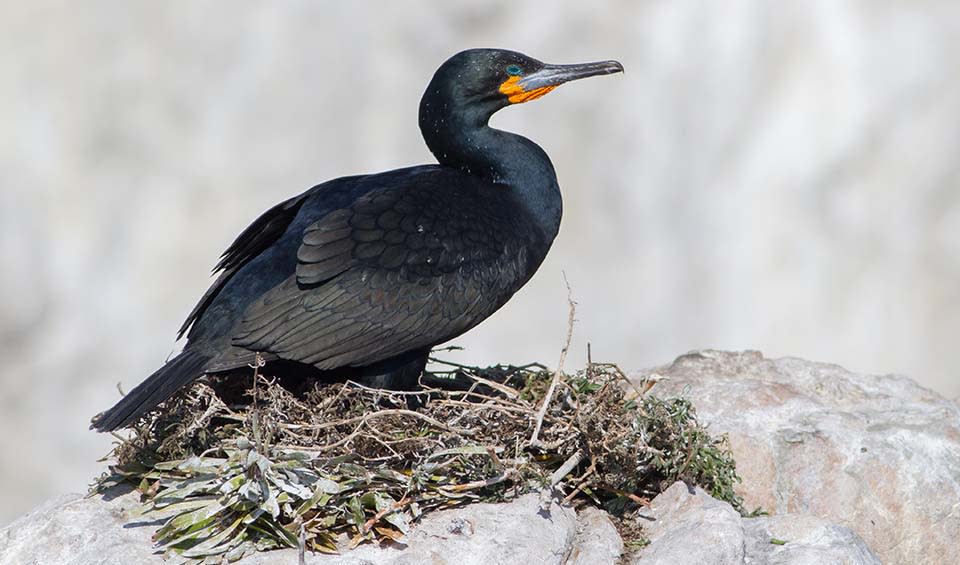Phalacrocorax – Old World cormorants
A reminder that birds are the descendants of the great Dinosaurs
Old World cormorants are found across a vast range from the coastal shores to the inland waterways of Europe, Asia, Africa, and Australia. These birds, which have a somewhat prehistoric appearance, are characterized by their dark plumage, long necks, and hooked bills, giving them a reptilian aesthetic that distinguishes them from other waterfowl.
The most familiar behavior of cormorants is their iconic stance with wings outstretched. This is not a mere display; it is a necessary behavior because, unlike many water birds, cormorants have less preen oil on their feathers, making them less waterproof. This adaptation allows them to dive and forage underwater more effectively, as their wetter feathers reduce buoyancy. However, it also means they must dry their wings upon returning to land to maintain flight efficiency and body temperature regulation.
Cormorants are superb fishers. Their diet primarily consists of fish, which they hunt by diving underwater, propelling themselves with strong webbed feet, and chasing their prey with agility and speed. The structure of their bill, with a hooked tip, is ideal for catching slippery fish. They have been observed fishing alone or in groups, and some species even cooperate to herd fish into shallows for easier hunting.
These birds are highly sociable outside of their foraging time. They nest in colonies, where they engage in complex social interactions. Their nests are constructed with a variety of materials and are often located in high places like cliffs or trees to avoid predators. Communication within the colonies is vocal and through a variety of displays.
Cormorants’ foraging strategies are highly efficient. They tend to forage in the morning hours, minimizing the time spent on this activity, although parents with chicks may invest more time in feeding their young. When fishing in freshwater, they have a diverse diet that can include insects, amphibians, and crustaceans in addition to fish.
Species in this genus
Bank cormorant
Their dark plumage makes them near-invisible in the shadowy depths, giving them a stealth advantage over their prey
Cape cormorant
Aren’t just dipping their toes in the water; they’re deep-sea divers with a serious appetite
Great cormorant
Due to their adaptability and willingness to migrate to more favorable habitats, great cormorants are found worldwide




